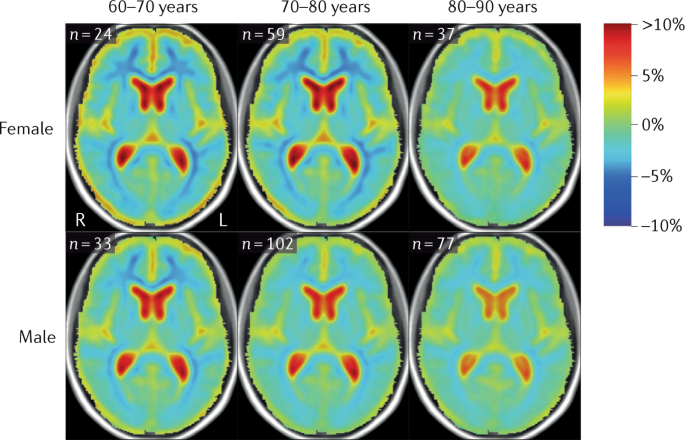- Select a language for the TTS:
- UK English Female
- UK English Male
- US English Female
- US English Male
- Australian Female
- Australian Male
- Language selected: (auto detect) - EN
Play all audios:
ABSTRACT BACKGROUND To assess the growth outcomes at 18 months corrected age in very low birth weight (VLBW) infants compared to standardized norms, and in VLBW infants with and without
bronchopulmonary dysplasia (BPD) or fetal growth restriction (FGR). METHODS In all, 1149 VLBW infants completed anthropometrics at 18 months corrected age. To derive weight, height, and body
mass index (BMI) percentiles and _z-_scores at 18 months, we used the SAS macro from the Centers for Disease Control and Prevention (CDC). _z-_scores for a child’s sex and age are based on
the World Health Organization’s growth charts for children <24 months of age. RESULTS Female and male VLBW infants had higher body-mass-index (BMI)-for-age _z-_scores compared to
normative data (0.82 and 1.77 respectively). No significant difference was found in BMI-for-age _z-_scores in BPD and non-BPD (1.76 vs. 2.3; _p_ = 0.4), nor in FGR and non-FGR (1.24 vs.
2.16; _p_ = 0.2). CONCLUSIONS At 18 months corrected age, VLBW infants, including those with BPD or FGR, had BMI-for-age _z-_scores higher than reference standards. No significant difference
was seen comparing BMI-for-age _z-_scores in the BPD/non-BPD and FGR/non-FGR groups. You have full access to this article via your institution. Download PDF SIMILAR CONTENT BEING VIEWED BY
OTHERS POSTNATAL GROWTH AND NEURODEVELOPMENT AT 2 YEARS’ CORRECTED AGE IN EXTREMELY LOW BIRTHWEIGHT INFANTS Article Open access 09 February 2024 EXPANDING DIVERSITY IN DEVELOPMENTAL PROFILES
OF VERY-LOW-BIRTH-WEIGHT INFANTS DURING 6 YEARS AFTER BIRTH Article Open access 06 February 2025 PRE-PREGNANCY BODY MASS INDEX, GESTATIONAL WEIGHT GAIN AND POSTNATAL GROWTH IN PRETERM
INFANTS Article 19 May 2021 INTRODUCTION Very low birth weight (VLBW; ≤1500 g) infants are at risk for poor growth during infancy and throughout childhood.1 Despite efforts to improve
neonatal nutrition2 and reduce the severity of neonatal illnesses,3 the prevalence of postnatal growth failure (defined as weight <10% for postmenstrual age) at NICU discharge remains
around 50%4 and persistent low body weight (defined as 2 standard deviations below normal for corrected age) is in excess of 16% by 2 years of age among VLBW children.5 Conversely, excessive
“catch-up” growth throughout childhood into adolescence (defined as upward centile crossing6) could lead to obesity,7 increasing the risk of cardiovascular,8,9 metabolic,10 and other
adverse health outcomes.11,12,13 Though many studies focus on weight as a long-term outcome measure, it is important to incorporate the impact of height as VLBWs are known to be shorter than
their term counterparts.14 Furthermore, many VLBWs are affected by significant neonatal morbidities, like bronchopulmonary dysplasia (BPD) or fetal growth restriction (FGR), that influence
weight gain.15,16 BPD, which affects approximately 30% of VLBW infants, is associated with increased energy expenditure contributing to early growth failure and higher nutritional demands.17
Thus, catch-up growth is an important component of care for infants with BPD, as well as for infants with low weight-for-age as a result of FGR. In population-based studies, catch-up growth
after FGR is associated with decreased hospital admissions, lower mortality rate,18 and improved cognition.19 However, accelerated growth during the first 3 months of life may increase the
risk of later metabolic dysregulation.20 Additionally, though both BPD and FGR infants have weight outcomes lower than those infants without BPD or FGR, they also have height outcomes that
are lower than their unaffected counterparts,21,22 impacting BMI-for-age _z-_scores in these two populations. Evaluation of BMI is important, since BMI is more strongly associated with
cardiovascular outcomes than weight or height alone.23 By examining growth patterns specific to infants with BPD or FGR, the impact of these morbidities on early growth can be better
understood. The primary objectives of this study are (1) to describe the frequency of poor and excessive growth among VLBW infants in the first years of life and (2) to evaluate whether BPD
or FGR influence growth outcomes. We hypothesized that: (1) VLBW infants, as compared to normative data, have delayed weight and length growth and (2) VLBW infants with BPD or FGR have
greater delay in growth than VLBW infants without these conditions. METHODS STUDY PARTICIPANTS Inclusion criteria for the current analysis were: (1) birth in either of two level 3 neonatal
intensive care units (NICU) in Winston-Salem, North Carolina, (2) date of birth between January 2002 and December 2011, (3) very low birth weight (birth weight less than 1500 g), and (4)
survival to 18 months corrected age. Of 1792 infants who met the inclusion criteria, 1206 (67%) were seen for follow-up evaluations at 18 months corrected age and 1149 infants had complete
anthropometric measurements documented in our follow-up clinic database and were therefore included in the analysis. MEASUREMENTS During the follow-up visits, weight and height measurements
were obtained by physicians, pediatric nurse practitioners, or a nurse with special expertise in neonatal follow-up. Weights were obtained using a calibrated scale with the infant undressed;
lengths were obtained supine with the infant’s head held in place against the head board by the parent or an assistant, the legs fully extended at the knee, and the ankle in a neutral
position against the recumbent length board. CLINICAL DATA Data were collected prospectively in an electronic clinical database and retrieved for the current analysis. Clinically significant
BPD was defined as supplemental oxygen requirement at 36 weeks corrected age in those infants <32 weeks at birth.24 FGR was defined as birth weight <10% for gestational age based on
Fenton growth curves.25 STATISTICAL ANALYSES Fenton growth charts for anthropometric parameters at birth were used to calculate fetal growth restriction for gestational age and sex.25 To
derive weight, height, and body mass index (BMI) percentiles and _z_-scores at 18 months corrected age, we used the SAS macro from the Centers for Disease Control and Prevention.26
_z-_scores for a child’s sex and age are based on the World Health Organization’s growth charts for children <24 months of age. For group comparisons, chi-square tests for categorical
variables and Student’s two-sample _t_ test for continuous variables were used. Linear mixed model regression was used to evaluate the associations between BPD and growth outcomes, adjusting
for fetal growth restriction, gestational age, twin status, maternal age, child sex, and race. This model was also used to evaluate the associations between FGR and growth outcomes,
adjusting for BPD, gestational age, twin status, maternal age, child sex, and race. Additionally, logistic regression was used for group comparisons for _z_-score >2 at 18 months
corrected age. SAS version 9.4 (SAS Institute, Inc, Cary, NC) was used to perform the statistical analyses. RESULTS Demographic data are presented in Table 1. The mean (±SD) gestational age
(GA) for the total cohort was 27.4 (±2.5) weeks and mean birth weight was 943 (±257) g. Fifty percent were female. On average, infants with BPD had lower GA and birth weight, were more
likely to be male, and had younger mothers. Infants with FGR, on average, had lower birth weight and higher GA, were more likely to be female, and had younger mothers. As shown in Table 2,
females and males had similar means for weight-for-age _z_-score at 18 months corrected age; however, males had lower mean length-for-age _z_-score and higher mean BMI-for-age _z_-score as
compared to females at 18 months corrected age. Table 3 provides a comparison of anthropometric data by BPD and FGR. Weight was lower in BPD infants at 18 months corrected age with an
average weight-for-age _z_-score of −0.73 as compared to an average weight-for-age _z_-score of −0.45 in those VLBW infants without BPD (_p_ = 0.19). BMI-for-age _z_-scores were not
different among infants with and without BPD (1.76 vs. 2.3; _p_ = 0.4) nor did the groups differ in the proportion with weight-for-age and BMI-for-age _z_-scores >2. Comparing infants
with and without fetal growth restriction, weight-for-age _z_-score at 18 months corrected age was lower among those with FGR (−1.36 vs. −0.48; _p_ < 0.01) as was average height-for-age
_z_-score (−2.37 vs. −1.63; _p_ < 0.01). However, BMI-for-age _z_-scores were not significantly different between the two groups (1.24 vs. 2.16; _p_ = 0.2). No FGR infants had
weight-for-age _z_-score >2, whereas 3.5% of non-FGR infants had weight-for-age _z_-score >2. No differences were found between the two groups in the proportion with BMI-for-age
_z_-score >2. DISCUSSION At 18 months corrected age, VLBW infants have weight and length-for-age _z_-scores lower than the reference standards and BMI-for-age _z_-scores higher than the
reference standards. The relatively high BMI-for-age _z_-scores among VLBW infants are attributable in large part to heights that are lower than the reference standards. Weight-for-age
_z_-scores were significantly lower among FGR children, as compared to non-FGR children, but weight-for-age _z_-scores were not significantly lower among BPD children, as compared to those
without BPD. Group differences (BPD vs. non-BPD or FGR vs. non-FGR) were not found for BMI-for-age _z_-scores. This is one of the few studies of growth in the VLBW infants to characterize
growth in subgroups of VLBW infants with BPD or FGR and one of the few studies to focus on BMI _z_-scores in early childhood. The lower weight-for-age _z_-score at 18 months observed among
infants with BPD may be attributed to several factors, including respiratory illnesses, which can worsen nutritional status,27 and increased caloric expenditure with increased work of
breathing. Studies by others suggest that chronic respiratory disease can impact early childhood growth in these infants.21 Other factors that might contribute to decreased weight-for-age
_z_-scores among VLBW infants include disordered feeding that affects many preterm infants, as well as factors associated with preterm birth, such as maternal age, race, and socioeconomic
status (SES).28,29 SES and race are known correlates of growth in full-term children.30 Studies in other cohorts suggest that despite advances in nutrition over the past quarter century that
have led to more rapid catch-up growth among individuals born VLBW,31,32 VLBW infants remain shorter than their term counterparts at all ages from early infancy, throughout childhood and
even into adulthood.33,34,35 However, during adolescence and adulthood, premature infants are at risk for becoming overweight or obese and consequently developing cardiovascular and
metabolic derangements.36,37,38 One longitudinal population-based study of extremely low gestational age infants showed a decline in weight-for-age _z_-scores through age 3 years, and then a
significant catch-up from age 3 years through adolescence with BMI-for-age _z_-scores also increasing from age 3 years through adulthood.20 In another study, by 14 years of age, extremely
low birth weight infants had similar rates of obesity as their term normal birth weight controls.7 Additionally, a cohort of FGR children continued to gain excess abdominal fat from 2 to 4
years of age after completion of catch-up weight gain.39 The potential clinical implication of our finding that VLBW infants have lower than normal length-for-age _z_-scores at 18 months is
that BMI may be an early indicator in predicting long-term growth and subsequent cardiometabolic outcomes. Though catch-up growth is associated with positive short- and long-term benefits,
potential long-term adverse health outcomes must also be considered.40 Our data suggest that high BMI-for-age _z_-score can manifest as early as 18 months corrected age, not only in the VLBW
cohort as a whole but additionally in the subset of infants with BPD and FGR. Despite its large size, the study sample was derived from a two-NICU single-center study, potentially limiting
generalizability. Follow-up ended at 18 months adjusted age, and measurements of growth derived later in childhood would further enhance knowledge regarding growth trajectories in VLBW
infants, both with and without BPD and/or FGR. Another limitation is the unavailability of the nutritional information such as proportions of breastmilk and formula feedings, caloric density
of feeds, and oral feedings vs. gastrostomy feedings, which may further characterize differences in growth. Strengths of this study include its relatively large sample of VLBW infants and
consideration of two neonatal factors (BPD and FGR) that appear to influence growth outcomes. Although VLBW infants have weight and height-for-age _z_-scores behind term reference standards
at 18 months corrected age, BMI-for-age _z_-scores are above zero in both male and female VLBW infants, including those with BPD and FGR, perhaps indicating early signs of accelerated weight
gain with lagging linear growth. With shorter stature in premature infants than term counterparts as they age, BMI-for-age _z_-scores may be an early predictor of long-term unhealthy weight
gain in VLBW infants. REFERENCES * Hack, M. et al. Growth of very low birth weight infants to age 20 years. _Pediatrics_ 112(1 Pt 1), e30–e38 (2003). Article Google Scholar * Lucas, A.,
Morley, R. & Cole, T. J. Randomized trial of early diet in preterm babies and later intelligence quotient. _BMJ_ 317, 1481–1487 (1998). Article CAS Google Scholar * Stoll, B. J. et
al. Trends in care practices, morbidity, and mortality of extremely preterm neonates, 1993−2012. _JAMA_ 314, 1039–1051 (2015). Article CAS Google Scholar * Horbar, J. D. et al. Weight
growth velocity and postnatal growth failure in infants 501 to 1500 grams: 2000−2013. _Pediatrics_ 136, e84–e92 (2015). Article Google Scholar * Belfort, M. B. et al. Weight status in the
first 2 years of life and neurodevelopmental impairment in extremely low gestational age newborns. _J. Pediatr._ 168, 30–35 (2016). Article Google Scholar * Singhal, A. Long-term adverse
effects of early growth acceleration or catch-up growth. _Ann. Nutr. Metab._ 70, 236–240 (2017). Article CAS Google Scholar * Hack, M. et al. Change in prevalence of chronic conditions
between childhood and adolescence among extremely low-birth-weight children. _JAMA_ 306, 394–401 (2011). Article CAS Google Scholar * Evelein, A. M., Visseren, F. L., van der Ent, C. K.,
Grobbee, D. E. & Uiterwaal, C. S. Excess early postnatal weight gain leads to thicker and stiffer arteries in young children. _J. Clin. Endocrinol. Metab._ 98, 794–801 (2013). Article
CAS Google Scholar * Tapp, R. J. et al. Impact of adiposity on cardiac structure in adult life: the Childhood Determinants of Adult Health (CDAH) study. _BMC Cardiovasc. Disord._ 14, 79
(2014). Article Google Scholar * Skinner, A. C., Perrin, E. M., Moss, L. A. & Skelton, J. A. Cardiometabolic risks and severity of obesity in children and young adults. _N. Engl. J.
Med._ 373, 1307–1317 (2015). Article Google Scholar * Mebrahtu, T. F., Feltbower, R. G., Greenwood, D. C. & Parslow, R. C. Childhood body mass index and wheezing disorders: a
systematic review and meta-analysis. _Pediatr. Allergy Immunol._ 26, 62–72 (2015). Article Google Scholar * Kark, M., Hjern, A. & Rasmussen, F. Poor school performance is associated
with a larger gain in body mass index during puberty. _Acta Paediatr._ 103, 207–213 (2014). Article CAS Google Scholar * Llewellyn, A., Simmonds, M., Owen, C. G. & Woolacott, N.
Childhood obesity as a predictor of morbidity in adulthood: a systematic review and meta-analysis. _Obes. Rev._ 17, 56–67 (2016). Article CAS Google Scholar * Hack, M., Weissman, B. &
Borawski-Clark, E. Catch-up growth during childhood among very low-birth-weight children. _Arch. Pediatr. Adolesc. Med._ 150, 1122–1129 (1996). Article CAS Google Scholar * DeMauro, S.
B. et al. Home oxygen and 2-year outcomes of preterm infants with bronchopulmonary dysplasia. _Pediatrics_ 143, 1–9 (2019). * De Jesus, L. C. et al. Outcomes of small for gestational age
infants born at <27 weeks’ gestation. _J. Pediatr._ 163, 55–60 (2013). Article Google Scholar * Kurzner, S. I. et al. Growth failure in bronchopulmonary dysplasia: elevated metabolic
rates and pulmonary mechanics. _J. Pediatr._ 112, 73–80 (1988). Article CAS Google Scholar * Victora, C. G., Barros, F. C., Horta, B. L. & Martorell, R. Short-term benefits of
catch-up growth for small-for-gestational-age infants. _Int. J. Epidemiol._ 30, 1325–1330 (2001). Article CAS Google Scholar * Lundgren, E. M., Cnattingius, S., Jonsson, B. & Tuvemo,
T. Intellectual and psychological performance in males born small for gestational age with and without catch-up growth. _Pediatr. Res._ 50, 91–96 (2001). Article CAS Google Scholar *
Fabricius-Bjerre, S. et al. Impact of birth weight and early infant weight gain on insulin resistance and associated cardiovascular risk factors in adolescence. _PLoS ONE_ 6, e20595 (2011).
Article CAS Google Scholar * Johnson, D. B., Cheney, C. & Monsen, E. R. Nutrition and feeding in infants with bronchopulmonary dysplasia after initial hospital discharge: risk factors
for growth failure. _J. Am. Diet. Assoc._ 98, 649–656 (1998). Article CAS Google Scholar * Leger, J., Limoni, C., Collin, D. & Czernichow, P. Prediction factors in the determination
of final height in subjects born small for gestational age. _Pediatr. Res._ 43, 808–812 (1998). Article CAS Google Scholar * Teo, K. K. et al. Associations of cardiometabolic outcomes
with indices of obesity in children aged 5 years and younger. _PLoS ONE_ 14, e0218816 (2019). Article CAS Google Scholar * Ehrenkranz, R. A. et al. Validation of the National Institutes
of Health consensus definition of bronchopulmonary dysplasia. _Pediatrics_ 116, 1353–1360 (2005). Article Google Scholar * Fenton, T. R. A new growth chart for preterm babies: Babson and
Benda’s chart updated with recent data and a new format. _BMC Pediatrics_ 3, 13 (2003). Article Google Scholar * Centers for Disease Control and Prevention: Division of Nutrition, Physical
Activity, and Obesity. A SAS program for the WHO growth charts (ages 0 to <2 years). http://www.cdc.gov/nccdphp/dnpao/growthcharts/resources/sas.htm. (2015). * Doyle, L. W., Ford, G.
& Davis, N. Health and hospitalisations after discharge in extremely low birth weight infants. _Semin. Neonatal._ 8, 137–145 (2003). Article Google Scholar * Love, C., David, R. J.,
Rankin, K. M. & Collins, J. W. Jr Exploring weathering: effects of lifelong economic environment and maternal age on low birth weight, small for gestational age, and preterm birth in
African-American and White women. _Am. J. Epidemiol._ 172, 127–134 (2010). Article Google Scholar * Morgen, C. S. et al. Socioeconomic disparities in birth weight and body mass index
during infancy through age 7 years: a study within the Danish National Birth Cohort. _BMJ Open_ 7, e011781 (2017). Article Google Scholar * Jones-Smith, J. C., Dieckmann, M. G., Gottlieb,
L., Chow, J. & Fernald, L. C. Socioeconomic status and trajectory of overweight from birth to mid-childhood: the Early Childhood Longitudinal Study-Birth Cohort. _PLoS ONE_ 9, e100181
(2014). Article Google Scholar * Hack, M., Weissman, B. & Borawski-Clark, E. Catch-up growth during childhood among very low-birth-weight children. _Arch. Pediatr. Adolesc. Med._ 150,
1122–1129 (1996). Article CAS Google Scholar * Park, J. et al. Postdischarge growth assessment in very low birth weight infants. _Korean J. Pediatr._ 60, 64–69 (2017). Article Google
Scholar * Saigal, S. et al. Growth trajectories of extremely low birth weight infants from birth to young adulthood: a longitudinal, population-based study. _Pediatr. Res._ 60, 751–758
(2006). Article Google Scholar * Farooqi, A., Hagglof, B., Sedin, G., Gothefors, L. & Serenius, F. Growth in 10- to 12-year old children born at 23 to 25 weeks’ gestation in the 1990s:
a Swedish National Prospective Follow-up Study. _Pediatrics_ 118, e1452–e1465 (2006). Article Google Scholar * Hollanders, J. J., van der Pal, S. M., van Dommelen, P., Rotteveel, J. &
Finken, M. J. J. Growth pattern and final height of very preterm vs very low birth weight infants. _Pediatr. Res._ 82, 317–323 (2017). Article Google Scholar * Casey, P. H. et al.
Evolution of obesity in a low birth weight cohort. _J. Perinatol._ 32, 91–96 (2012). Article CAS Google Scholar * Singhal, A., Fewtrell, M., Cole, T. J. & Lucas, A. Low nutrient
intake and early growth for later insulin resistance in adolescents born preterm. _Lancet_ 361, 1089–1097 (2003). Article CAS Google Scholar * Cianfarani, S., Germani, D. & Branca, F.
Low birthweight and adult insulin resistance: the “catch-up growth” hypothesis. _Arch. Dis. Child Fetal Neonatal Ed._ 81, F71–F73 (1999). Article CAS Google Scholar * Ibanez, L., Ong,
K., Dunger, D. B. & de Zegher, F. Early development of adiposity and insulin resistance after catch-up weight gain in small-for-gestational age children. _J. Clin. Endocrinol. Metab._
91, 2153–2158 (2006). Article CAS Google Scholar * Martin, A., Connelly, A., Bland, R. M. & Reilly, J. J. Health impact of catch-up growth in low-birth weight infants: systematic
review, evidence appraisal, and meta-analysis. _Matern. Child Nutr._ 13, 1–13 (2017). Download references AUTHOR INFORMATION AUTHORS AND AFFILIATIONS * Department of Pediatrics, Wake Forest
University School of Medicine, Wake Forest Baptist Health, Winston-Salem, NC, USA Jennifer Check & Joseph A. Skelton * Department of Epidemiology and Prevention, Division of Public
Health Sciences, Wake Forest University School of Medicine, Wake Forest Baptist Health, Winston-Salem, NC, USA Elizabeth T. Jensen * Department of Biostatistical Sciences, Division of Public
Health Sciences, Wake Forest University School of Medicine, Wake Forest Baptist Health, Winston-Salem, NC, USA Walter T. Ambrosius * Department of Pediatrics, University of North Carolina
at Chapel Hill, UNC Hospitals, Chapel Hill, NC, USA T. Michael O’Shea Authors * Jennifer Check View author publications You can also search for this author inPubMed Google Scholar *
Elizabeth T. Jensen View author publications You can also search for this author inPubMed Google Scholar * Joseph A. Skelton View author publications You can also search for this author
inPubMed Google Scholar * Walter T. Ambrosius View author publications You can also search for this author inPubMed Google Scholar * T. Michael O’Shea View author publications You can also
search for this author inPubMed Google Scholar CONTRIBUTIONS J.C. made substantial contributions to this manuscript, including the conception and design of the study, acquisition of data,
analysis and interpretation of data, drafting the initial manuscript and revising it, and has given final approval of the version to be published. E.J. made substantial contributions to the
analysis and interpretation of data, reviewed and edited the manuscript, and has given final approval of the version to be published. J.S. made substantial contributions to the design of the
study, analysis and interpretation of data, reviewed and edited the manuscript, and has given final approval of the version to be published. W.T.A. made substantial contributions to the
design of the study, formal analysis and interpretation of data, reviewed and edited the manuscript, and has given final approval of the version to be published. T.M.O. made substantial
contributions to the design of the study, acquisition of data, analysis and interpretation of the data, reviewed and edited the manuscript, and has given final approval of the version to be
published. CORRESPONDING AUTHOR Correspondence to Jennifer Check. ETHICS DECLARATIONS COMPETING INTERESTS The authors declare no competing interests. ADDITIONAL INFORMATION PUBLISHER’S NOTE
Springer Nature remains neutral with regard to jurisdictional claims in published maps and institutional affiliations. RIGHTS AND PERMISSIONS Reprints and permissions ABOUT THIS ARTICLE CITE
THIS ARTICLE Check, J., Jensen, E.T., Skelton, J.A. _et al._ Early growth outcomes in very low birth weight infants with bronchopulmonary dysplasia or fetal growth restriction. _Pediatr
Res_ 88, 601–604 (2020). https://doi.org/10.1038/s41390-020-0808-7 Download citation * Received: 11 September 2019 * Revised: 29 January 2020 * Accepted: 07 February 2020 * Published: 15
February 2020 * Issue Date: October 2020 * DOI: https://doi.org/10.1038/s41390-020-0808-7 SHARE THIS ARTICLE Anyone you share the following link with will be able to read this content: Get
shareable link Sorry, a shareable link is not currently available for this article. Copy to clipboard Provided by the Springer Nature SharedIt content-sharing initiative






